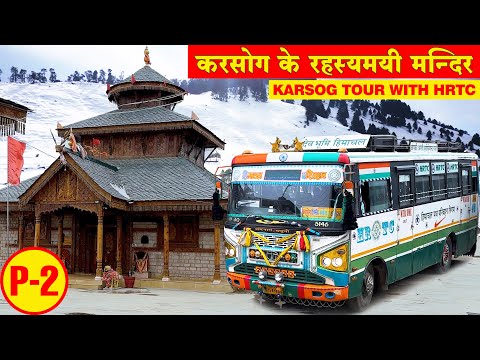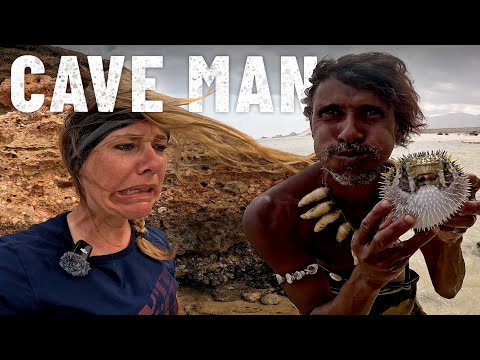MYSTERIOUS TEMPLES OF KARSOG - Karsog Temple Tour with HRTC | करसोग के मन्दिर | Himbus

♪ Music ♪ Hello friends, Welcome to our YouTube channel. Today we have brought the second part of our Karsog Journey for you. In which we will take you to see the main temples of Karsog and will also learn about their history and interesting stories.
In the previous video, we came to Karsog from Shimla, I hope you must have seen that video. So now let's start this second video. Today is 3rd February. For the last few days, there has been rain and snowfall throughout Himachal Pradesh.
Just this morning the weather is clear here, so I am going out to visit the nearby temples. The main temples in Karsog Valley include Mamleshwar Mahadev Temple, Chindi Mata Temple, Kamaksha Mata Temple, Naag Dhamuni Temple and Shri Mool Manhunag Ji Temple. My attempt was to visit all these temples But here it was found that there is a lot of snow till Shri Mool Manhunag Temple, so it is a bit difficult to reach there. So for now let's go to other temples. We will start from Chindi Mata temple.
Chindi is 13 km away from Karsog on Shimla road. So to go by bus, you can go there by any bus going to Churag, Tattapani or Shimla. I got this local bus of Karsog-Salana route in which I am going to Chindi Mata temple. Many passengers have boarded the bus, I have to go till Chindi only, so I can go standing also. The bus reached Chindi within 15-20 minutes from Karsog and I got down from the bus here. The bus moved ahead towards Salana.
Chindi Mata Temple is near the main bus stop in Chindi. From outside it appears that this is an ancient temple and it is made of wood. Chindi is a place situated at a high altitude and there is a lot of snow around here. Karsog is just downstream from here and snow does not fall till Karsog.
The story of Chindi Mata Temple that has been going on for centuries continues even today. It is said that Mother Goddess had appeared in the form of a girl. Goddess herself had built the temple by making a string of ants. Goddess had given information about the map to the Pandit in a dream. After that, after looking at the map, a similar temple was built here. Along with the temple, the map of the pond and store room here was also made by ants.
It is believed that Chindi Mata never went out of her area, But when King Laxman Sen of Suket state tried to take the goddess out of the door, the king had to suffer the consequences. According to mythology, once King Lakshman Sen of Suket state had insisted on calling Chindi Mata to Sundernagar. As soon as the servants took the goddess out of the door, At the same time, due to the wrath of Mother Goddess, the Ashtadhatu idol turned black. But despite this, when an attempt was made to take the goddess as per the king's order, the king had to face the fierce form of the goddess.
It is also believed that King Lakshman Sen, repenting his mistake, prostrated himself and reached Chindi to seek forgiveness from the Mother Goddess. Even in the modern era, the faith of devotees towards Chindi Mata remains the same as before. It is said that when someone is unable to have a child, such couples get the happiness of having a child by visiting Chindi Mata Temple. With this belief, the wishes of thousands of devotees come true when they visit the temple.
After which the devotees also organize Bhandara in the temple to express their gratitude to the Mother Goddess. Chindi Mata comes out of the temple only twice a year and thrice in the third year. Chindi Mata fair is held every year from 2 to 4 August at a place called Chankranth.
During that time the Mother goddess comes out of the temple for three days. After this, the Mother also comes out of the temple during the Kariyala held in the area. Every three years the Mother comes out of the temple three times. Whenever Mata comes out of the temple, devotees from far and wide including Karsog reach the temple for darshan.
There is a store room on this side of the temple and Mata's chariot is also kept here. The chariot is taken out only when the Mother goes on a tour. Only priests or temple officials are allowed to enter this room. This is a beautiful pond near the temple. It is said that the map of this pond and storage room was also made by ants. Which has now been transformed into a beautiful structure by masonry of stones.
Chindi is a town situated on high altitude just above Karsog. A beautiful view of the surrounding area can be seen from here. For accommodation, there is also The Mamleshwar Hotel of Himachal Tourism here where you can stay comfortably. So after having darshan of Chindi Mata here, now I have to go to Kamaksha Mata Temple and Mamleshwar Mahadev Temple. Both those temples are near Karsog, so I took a bus from here and came back to Karsog.
I had just reached Karsog then I saw this bus of Karsog-Chaira route which will go by covering both Mamleshwar and Kamaksha temples. So I quickly boarded the bus and am going to Kamaksha Mata Temple first. Kamaksha Mata Temple is about 5 minutes away from Karsog and it takes at least 30 minutes to reach there while dealing with the traffic of Karsog market. So our bus left from Karsog at 2:30 pm and reached Kamaksha Temple Kao here at around 3:15 pm. Local buses are usually very crowded here. And here near the bus stop is the grand temple of Kamaksha Mata.
There are only 3 temples of Kamaksha Mata in the country. First Assam's famous mythological Shaktipeeth Kamakhya Devi Temple The second one is in Kanchipuram of Tamil Nadu and the third one here is in Karsog. This is the only temple of Kamaksha Mata located in Karsog where Mata appears in her full form. In the Kamaksha Mata temple located in Assam, the mother goddess is worshiped in the form of womb. Mother's feet are worshiped in the temple located in Kanchipuram, Tamil Nadu While there is a temple of Maa Kamaksha also in Pakistan which is known as Hinglaj Mata.
And there Mother Goddess appears in the form of Sheela or Jyoti. There is mention of the arrival of Lord Parshuram also in this temple of Karsog. And it is believed that he was the one who had prepared the draft of this temple. It is also believed that this Shaktipeeth of the Goddess is from the time of Satyayuga.
However, researchers believe that it could be a temple of Parashuram or Pandav period. Because, it is not possible for the temple of Satyayug to survive till today. Well, this is a subject of deep research, But people associate all kinds of beliefs with faith. As far as Parshuram ji is concerned, his relation is also linked with the temple of Mamleshwar Mahadev. Now after this we will also go to the temple of Mamleshwar Mahadev. As we told you that this temple of Kamaksha Mata is quite ancient And this temple has also been the family deity of the kings of Suket, Bushehr and Kullu states.
Many sculptures from the Pandava period are present in the temple. All these idols are made of Ashtadhatu. During the fair all these idols are seated on the chariot. A fair is organized here twice a year.
Thousands of people gather here to have darshan of mata. An interesting thing here is that earlier buffaloes were also sacrificed here. Hundreds of buffaloes were chased and killed. Due to which the fields became drenched in blood. This is not very old, all this was happening till 10-15 years ago.
But in the year 2012, the priest of the temple, Bansilal, decided to oppose it. Only the local Panchayat head supported him. Rest of the people stood against both of them. Sacrifice supporters boycotted him socially. Many times it even came to the point of a police case.
So for a long time there was a tussle between those in favor of sacrifice and those who opposed it. The matter passed through the police and deputy commissioner and reached the High Court. Those in favor of sacrifice cited it as being linked to ancient customs and culture. Those who opposed sacrifice called it evil and raised their voice against cruelty to animals.
Eventually this practice was banned by the High Court Today the practice of sacrifice has been banned in all the temples of Himachal Pradesh. Whose origin was from the Kamaksha temple here itself. Here a beautiful view of Karsog valley is visible from Kamaksha Temple Kao.
There are high mountains on both sides of the valley where snow has fallen. Behind those clouds is covered Shikari Mata ki Chhoti. A road has also been built from Karsog to reach Shikari Mata Temple. Well, the main route is via Janjehli. Here, hot fritters are available in village shops.
And the chutney given along with it has its own pleasure. So I also ate some fritters here. It is now evening and it has suddenly become cold here. So people are warming themselves by the fire here.
After this, the same bus returned from Chaira at around 4:30 pm. Now I will go to Karsog in this bus and get down near Mamleshwar Mahadev Temple. And in about 15 minutes the bus dropped me here near Mamleshwar temple. Mamleshwar Temple is just 2 km away from Karsog Bus Stand. And this is the most important temple of Karsog. It is believed that the Pandavas stayed here during their exile period.
Here Pandavas cultivated wheat and even today a grain of wheat is kept in the temple. The weight of this wheat grain is 250 grams. Apart from this, there is a smokestack in the temple which has been burning continuously for the last five thousand years. And the interesting thing is that the ashes of this smokestack have not been taken out till date. For hundreds of years the ashes get absorbed into the smoke.
There is also a giant drum in this temple. It is believed that Mahabali Bhima used to play this huge drum in his free time. Apart from this, it is believed about the Shivalingas installed in the temple that it was the Pandavas who installed them here. The temple is also said to be from the Mahabharata period. The temple of Mamleshwar Mahadev is dedicated to Lord Shiva and Mother Parvati.
Budhi Diwali also has special significance in this temple. It is said that when Lord Shri Ram returned to Ayodhya from Lanka after defeating Ravana So this information reached this area with some delay. Due to late arrival of information, its celebration was held here after about a month. Even today, after thousands of years, Budhi Diwali has special significance in Mamleshwar Mahadev. On the day of Budhi Diwali, rituals of Gods and Goddesses take place here.
People's problems are also solved in this ritual. Apart from this, there is also another Luxmi Narsingh temple in Karsog market itself. As the name itself suggests, in this temple Goddess Laksmi and Lord Vishnu are worshiped here in the form of Narsingh. This temple is also made of wood and magnificent pictures of Gods and Goddesses are carved on its walls. So while returning here after visiting the temples of Karsog, it was late at night. A close friend of mine lives here in Seri Bunglow near Karsog.
When I told him about my coming here to Karsog, he came to pick me up in the night itself. So I had to check out from the hotel here at night and went with him to his house. It was late at night so we had a hot meal as soon as we reached. My freinds family had prepared dal, rice, kadhi and chapatis for me. After this, we ate and went to sleep.
Next morning I woke up late. The view outside was amazing. It's Cloudy and maybe it rains. After this, we took a bath and got ready Aunty ji gave us parathas for breakfast. And as I told you, the weather is bad today. It is raining and it is possible that it will snow.
We are now going to the temple of Shri Naag Dhamuni ji in Seri Bunglow. In about 10-15 minutes, we reached the temple of Shri Naag Dhamuni ji. This temple is located 19 km away from Karsog in Seri Bunglow. Shri Naag Dhamuni is also the main deity of this region. Naag Dhamuni means this deity is the form of a snake.
The original place of Naag Dhamuni ji is in Larji of Kullu district. It is believed that the people of Larji Dhaman stopped worshipping the deity and started worshipping other tantra mantras. Later, due to the wrath of the deity, the entire village was destroyed. There was a woman from Larji Dhaman who was a devotee of Shri Naag Dhamuni. She left that village and came to this Karsog region and Naag Dhamuni ji also came to this region with her.
After that, deity Shri Naag Dhamuni established his place at this Seri Bunglow. Apart from this, the deity went to many other places. And wherever he stayed, temples of that deity were built. It is also said that due to the lightning, a hole was formed in the earth and the idol of the deity has come out from there.
That idol is placed in this temple here. Nowadays, the deity Nag Dhamuni ji is highly revered in this region. Every year, on the day of Naag Panchami, a three-day grand fair is held here. Hundreds of people gather here during the fair and the whole area is ecstatic with the sound of worship and traditional instruments. Today, it is raining heavily here. This is an open field above Seri village and the deity's three-day fair is held here.
During that time, the deity also migrate here. A temple has been built here also and these are the idols of the Jodh Devta and Mishanu Devta. These are the local deities of this valley. Himachal Pradesh is a land of gods and you must be knowing why it is called a land of gods.
Here, you will find temples in every village. And all the deities have their own history. We can move forward as much as we want towards modernity. But we should definitely keep information about our deities and their culture, which is a precious heritage.
So, after visiting the Nag dhamuni temple, we went a little up towards Mahavan village. But we couldn't go much further because there was snow on the road ahead. So, a lot of snow has fallen around here. And the road has been closed to go to the village ahead. Everyone is sitting crouching in the houses around here. People have collected all the things they need.
And they have already stocked fodder for their animals. This road goes ahead to Mahavan village. And a track goes ahead for Dhamun Tibba. There is a lot of snow there these days but it can be easily reached during summers. Dhamun Tibba is at a higher altitude and it is right in front of Shri Mool Mahunaag. After this, the weather started to open up a little in the evening.
I hope the weather will be clear tomorrow. And it is possible that the road to the Mandi will also be open tomorrow. Because tomorrow I will go back home from Karsog via Sundernagar. Karsog Valley is surrounded by high mountains.
While on one side there is the temple of Chindi Mata, on the other side Shri Mool Manhunag and Dhamun Tibba are opposite to each other. There is Shikari Mata Wildlife Sanctuary on the back side of the valley and there is also a temple of Shikari Mata on a higher side. Hundreds of such temples located in Himachal Pradesh have their own rich and mysterious history.
People have deep faith in Gods and Goddesses. During the fairs organized in these temples, one gets a chance to see the rare customs and culture of this place closely. So if you ever come this way, definitely visit these temples.
And you can spend a good time in the lap of nature. There are 3 main routes to reach Karsog, one of which comes from Shimla and the other from Sundernagar. Apart from this, one can also reach here from Rampur side. So friends, we end today's video here. Hope you liked it .
You would have enjoyed visiting the main temples located around Karsog and knowing the history of this place. See you soon in the next video in which we will show you the bus journey from Karsog to Sundernagar via Pangna, Pandar and Rohanda. Thank you!
2024-03-03 01:30


